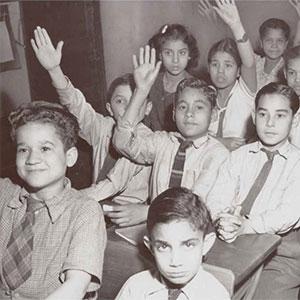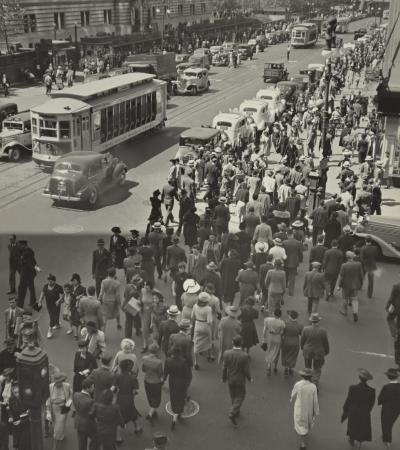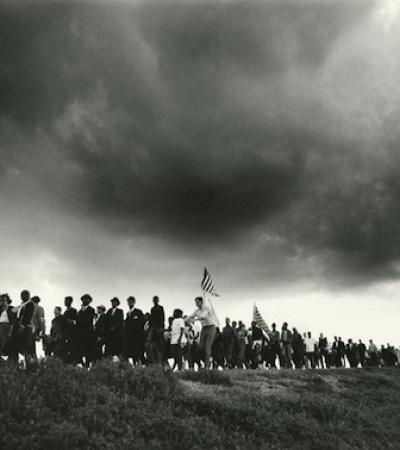This month, EDSITEment celebrates Constitution Day, Civic Awareness Month, and National Hispanic Heritage Month as well as explores resources for National History Day projects and shares some of the best humanities sites on the web.
National History Day Lesson: “Rights and Responsibilities”

Historic digitized newspapers are treasure troves of information, historical context, and primary source material. Created through a partnership of The National Endowment for the Humanities and the Library of Congress, Chronicling America contains more than six million pages of local and state newspapers from 1836–1922. As such, it is an essential resource for educators who are guiding students through their National History Day projects. In this new lesson, students will examine a preselected set of newspaper articles drawn from the Chronicling America website. They will determine the right each article illustrates and the responsibility that comes with that right.
September 17 Is Constitution Day
September 17th is Constitution Day, commemorating the day in 1787 when, at the end of a long hot summer of discussion, debate and deliberation, the delegates to the Constitutional Convention signed America’s most important document. George Washington, on behalf of the Convention, transmitted the proposed Constitution to the Congress assembled under the Articles of Confederation. Eleven days later the Congress by unanimous resolution passed the proposal on to conventions of delegates to be chosen in each state. It was in these state conventions that the Constitution was thoroughly discussed, debated and eventually ratified.
September/October Is National Hispanic Heritage Month
Latino Americans is the first major documentary series for television to chronicle the rich and varied history and experiences of Latinos, who have helped shape North America over the last five hundred years and have become, with more than fifty million people, the largest minority group in the United States. The changing and yet repeating context of American history provides a backdrop for the drama of individual lives. The documentary is a story of immigration and redemption, of anguish and celebration, of the gradual construction of a new American identity that connects and empowers millions of people today. Produced with support from the National Endowment for the Humanities, Latino Americans features interviews with nearly one hundred Latinos and more than five hundred years of history. This landmark, six-hour documentary premieres in fall 2013 on PBS.
Spanish Immigrant Transforms America’s Urban Architecture looks at the history, engineering, and artistry of Raphael Guastavino. More than two hundred Guastavino structures were built in New York City, including the registry hall at Ellis Island, the main entrance to Carnegie Hall, and the Oyster Bar at Grand Central Station. The distinctive Guastavino vaulted ceilings employed lightweight, fireproof tiles and were remarkably strong, economical, and artistically exquisite. Although the building techniques were based on fourteenth-century methods he learned from master builders in Spain, Guastavino was the first to bring the engineering process to the United States when he immigrated in 1881. Over the years, Raphael Guastavino and his family company, the Guastavino Fireproof Construction Company, built more than one thousand buildings in eleven countries, more than six hundred of which survive today. Guastavino is the subject of an exhibition, Palaces for the People, currently on view at the National Building Museum.
The Aztecs and the Making of Colonial Mexico, a virtual exhibit from the Newberry Library, focuses on Colonial Mexico and the intersection and interaction between a Spanish culture of written knowledge and an Aztec culture of oral knowledge and pictorial writing. The Aztecs are well-known as the people who established the great city Tenochtitlan (ca. 1325; present-day Mexico City) and conquered and ruled Mexico from the Pacific Ocean to the Gulf Coast. The Spanish conquistador Hernán Cortés’s invasion and conquest of the Aztec empire in 1521 had profound consequences for Mexico’s indigenous people. How did the Aztecs’ descendants, the Nahua, respond to the challenge of an alien people, culture, language, and religious beliefs? How did the Nahua preserve their culture, language, identity, and history? How did they shape the colonial era?
Best of the Humanities on the Web
Pay tribute to the men, women, and children killed in the terror attacks of September 11, 2001, and February 26, 1993, with inspirational new mobile videos that can be experienced wherever you are on the 9/11 Memorial website.
Troy is a digital treasure trove of archaeological information, animations, geography, history, timelines, legends, and myths about the legendary city of Troy, all in an engaging format.



